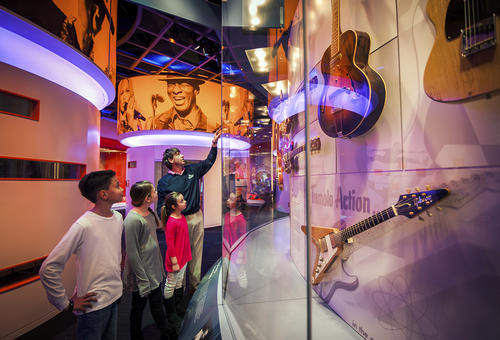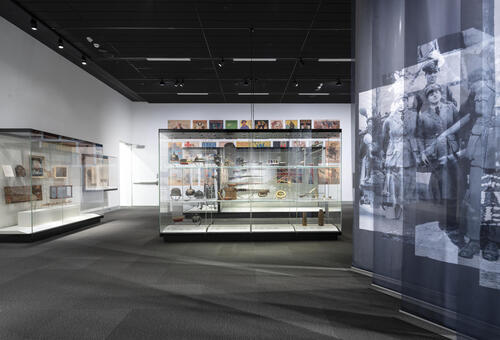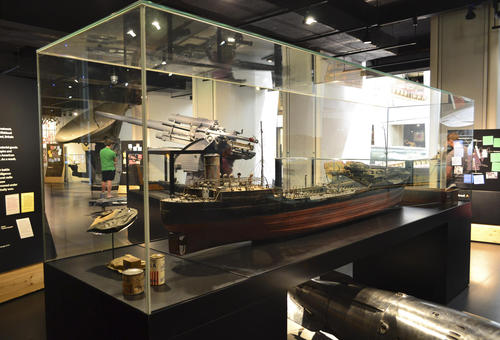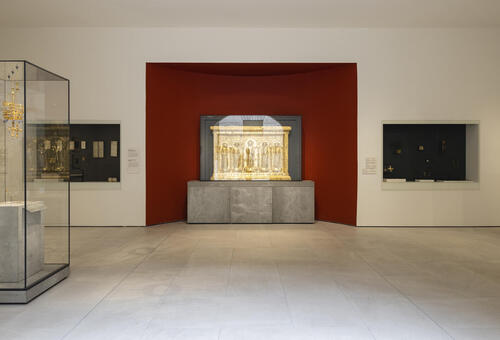The museum & the collection
In the 1620s, Uppsala University constructed a new main building in the center of the town - the Gustavianum. In 1997, this historical building was repurposed with the establishment of Gustavianum, Uppsala University Museum. This initiative brought together various historical collections previously scattered across the university into a single organization.
Operating a modern museum in a historical building posed several challenges, including climate control and accessibility issues. Consequently, a careful refurbishment of the building was undertaken, including the modernization of all museum displays.
It’s also worth mentioning that the Gustavianum museum houses the oldest Augsburg Art Cabinet, the only one of Hainhofer’s cabinets from the early 17th century with its collection of objects still intact. This cabinet, containing up to a thousand objects, offers a unique glimpse into the early 17th-century world of art and culture, symbolizing education, interests, and the search for knowledge.

The assignment & the challenges
Meyvaert provided new showcases for three different galleries: the University and Science History gallery, the Egyptian and Mediterranean Archaeology gallery, and the Fine and Applied Art gallery. Three different galleries, three different designs. Each design was characterised by unique accents, details, and materials. Our project consisted of a variety of solutions that each met the requirements of the different design intents.
The abovementioned museum galleries are situated in a 17th-century building with limited access, meaning most of the larger cases had to be fully assembled and installed on site. The soft pine wooden floor, renewed on the existing wooden structure, presented challenges due to its unevenness, making case levelling difficult.

The solutions & the result
We were flexible and innovative in providing diverse showcase solutions to meet the designers’ wishes and conservation & security requirements. In the Egyptian and Mediterranean galleries, for example, the showcases are designed with solid surface (Corian) cladding, minimizing visible seams as requested by the designer.
We also integrated several opening mechanisms (piston-hinged and vertical manual lifting systems) depending on the available space in the base plinth, ensuring easy access for museum staff. For some desktop cases, where plinths were too low to hide a vertical lifting system, we side-hinged 280kg glass hoods (3.6x1x0.9m). For others, we used a double telescopic vertical manual lifting system to accommodate objects like a mummy coffin, providing a lift of almost 0.8m despite the base plinths being only 0.65m.
Most cases featured customized versions of our in-house Meyvaert Solutions. The base profiles were tailored to be combined with the solid surface finish (Corian) and the various opening mechanisms discussed above.
Moreover, we designed custom label holders and a shelf system that followed the overall design intent with solid-surface shelves supported by custom powder-coated brackets.
The restrictions related to the building invited us to come up with creative and efficient solutions. Given the limited access, we adjusted our packing to avoid wasting time unloading outside. We used adequate protection materials to spread the load and protect the soft wooden floor, and we equipped the showcase with sufficient levelling feet to distribute the weight evenly. We coordinated with the main contractor to distribute some big and heavy pieces via the staircase of the ancient building since the elevator was under renovation and too small for our needs.
Designing freestanding shallow cases with five sides of glass along the walls also posed a challenge. These cases could only be fixed to the floor due to heritage restrictions, requiring us to prevent torsion when opening the front doors.
The pièce de résistance of this project is the display for the magnificent 425-kg Augsburg Art Cabinet. The museum is now boasting a freestanding tall case measuring 1.7x1.7x3.2m, featuring a door on each side to facilitate research on all sides of the cabinet. This piece houses hundreds of objects, curiosities, and natural history specimens in various drawers and doors. We ensured that opposite doors could be opened simultaneously for the installation of the object inside the showcase.
This meticulous and innovative approach allowed us to meet the complex requirements of the project, delivering high-quality, adaptable display solutions for the Gustavianum.

© Gustavianum, Uppsala University Museum
Project
Gustavianum - University Museum Uppsala
Solutions
Country
Sweden
Year
2024
Type of museum
University Museum
Designer
Note Design Studio & MESYR
Scope
40 showcases & 2 benches
More info
© Gustavianum, Uppsala University Museum



